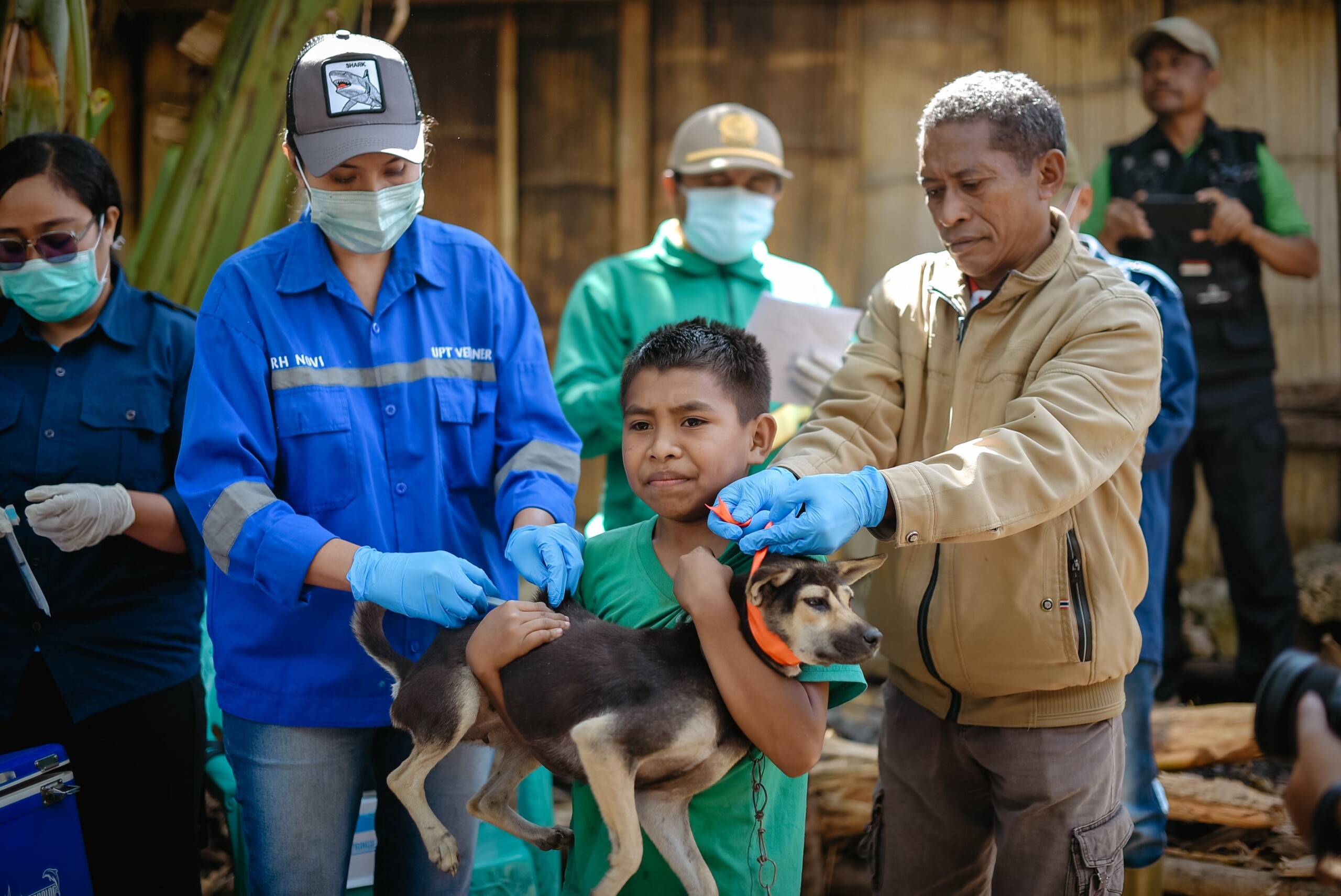



The free-roaming dog research, including spatial tracking, is a critical area of study aimed at understanding the behaviour and movement patterns of free-roaming dogs in Singapore. By utilising tools such as GPS collars and Geographic Information Systems (GIS), researchers gain insights into the spatial distribution of free-roaming dogs, movement behaviour, and interaction with human settlements. This research not only sheds light on the ecological implications of free-roaming dog populations but also aids in the development of effective and targeted management strategies to mitigate potential risks to public health and dog population increase. Additionally, spatial tracking data helps inform policymakers and animal welfare organisations in implementing targeted efforts under the Trap-Neuter-Rehome/Release-Manage (TNRM) programme.
Deployment of satellite tracking collar on a free-roaming dog after it has been assessed to be healthy and suitable for collaring by our team of veterinarians
GPS satellite tracking collars with proximity function are invaluable tools in studying movement ecology and interaction patterns of animals, especially wildlife such as coyotes. We apply these collars to study movement, home range and inter/intra-pack behaviour of free-roaming dogs in Singapore. The collars not only provide accurate location data but also allow researchers to track the spatial proximity and social interactions between individual dogs or groups. By analysing this data, researchers can gain a deeper understanding of how free-roaming dogs navigate and utilise urban spaces, their territorial behaviour, and the dynamics of their social networks. Furthermore, heatmaps can be generated from GPS data to visualise the density of dog movement in areas which have high human activity. This would help identify potential hotspots of human-dog interactions, enabling a better assessment of the risks and benefits associated with the presence of free-roaming dogs in specific areas.
The selection criteria of GPS collars and study subjects, as well as the tagging process, was designed to prioritise the safety and well-being of the animals involved. Before tagging a dog, a thorough assessment of its physical condition, health, and behaviour is assessed by the researchers and veterinarians. Only dogs that meet specific criteria, such as having an acceptable body condition and weight were considered eligible for collar attachment. The type of collar was selected to ensure it was appropriate for use on canines and does not exceed a certain percentage of the dog’s body weight to avoid any discomfort or impairment of the dog’s natural movements. Dogs displaying signs of illness or injury are excluded from the study. Researchers also closely track the collared dogs’ movements to assess their behaviour and ensure that the GPS collars were properly functioning without causing any discomfort or hindrance to the dogs’ daily activities.
GPS tagging free-roaming dogs comes with several challenges that researchers must navigate. One significant hurdle is capturing and trapping the dogs to attach the collars. These dogs by nature are often wary of human presence and can be difficult to approach, making the trapping process time-consuming and requiring specialised skills. The safety of both the dogs and researchers must be carefully considered during capture efforts. Logistically, maintaining and retrieving the collars can be challenging in urban environments with limited access to certain areas and potential hazards. Furthermore, there may be social challenges related to public perception and community engagement. Local knowledge, attitude, and perception (KAP) towards free-roaming dogs and research activities can vary, therefore it was essential to build trust and cooperation to ensure successful data collection. Balancing these logistical and social challenges was essential for carrying out an effective and responsible research study.
The initial observations from the tracking data collected offer intriguing insights into the behaviour and movement patterns of free-roaming dogs in different environments. Within industrial areas, where regular caregivers provide food and shelter, the dogs seem to exhibit a strong attachment to the compounds in which they receive regular care. This attachment likely stems from the establishment of a familiar and reliable food source, leading to a more localised roaming pattern. On the other hand, free-roaming dogs living in forested areas appear to have a more expansive roaming range. The observation of these dogs venturing great distances into residential areas indicates their adaptability and resourcefulness in seeking sustenance beyond their primary habitation. These findings highlight the importance of considering the specific ecological and human-impact factors (e.g., food availability, level of urbanisation, human activity levels) in different areas when designing management strategies for free-roaming dog populations, with the potential for tailored interventions to address the varying needs of dogs in different environments.




